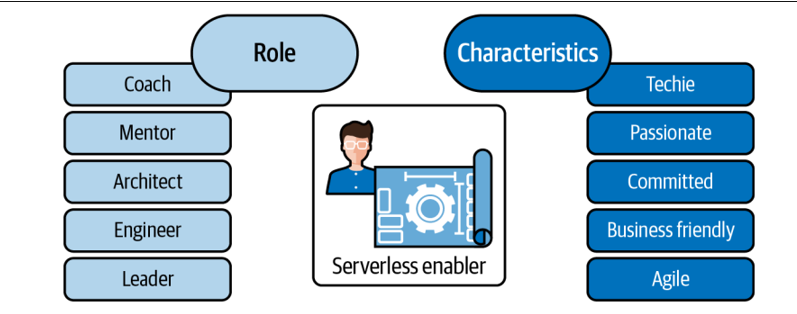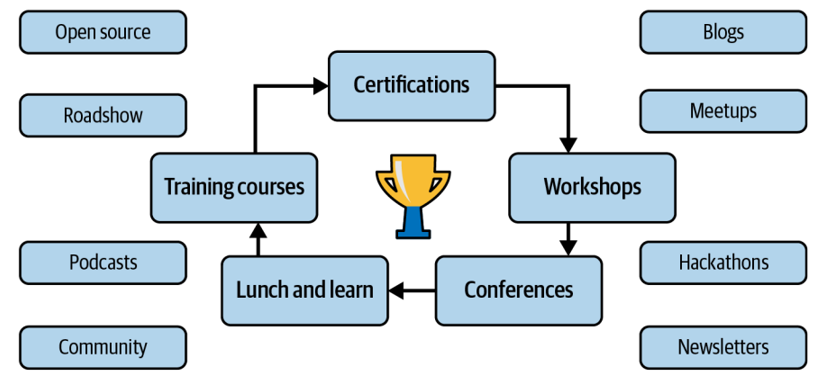A serverless enabler to guide the team
With a fertile field and healthy seeds, the ground is ready for serverless growth. The role of a “gardener” to cultivate that ground during serverless adoption’s early stages is vital. Your engineers need a strong guide to help them navigate the uncharted territory of serverless in your organization. This serverless enabler could be a senior or lead engineer, an architect, an engineering manager, or even the CTO, depending on the structure of your organization. It’s not the title that matters here; as Gregor Hohpe states in his book The Software Architect Elevator (O’Reilly), what you’re looking for is someone who can comfortably “ride the elevator” between the ivory tower (of business stakeholders and enterprise architects) and the IT engine room (of engineers).
Serverless adoption in an organization is a journey. As illustrated in Figure 2-16, you need a committed, tech-driven, passionate, and business-friendly navigator who can show you technical direction to enable the growth of engineers in technology.

Figure 2-16. The necessary qualities of a serverless enabler to guide serverless adoption
Training and a knowledge base
Along with water and sunlight, nutrition is essential for every living entity in an eco‐ system. Similarly, the engineers who are part of an organization’s serverless ecosystem need a constant supply of knowledge to upskill and keep up with the evolving tech‐ nology landscape. New services, features, tools, frameworks, patterns, and capabilities are announced almost daily, and keeping pace with the speed of change can be chal‐ lenging for a new team of serverless engineers. Hence, the necessary measures must be identified and implemented to swiftly assess and address these needs from the early days of serverless adoption. Coaching, training, workshops, and other learning methods must be considered and encouraged (see Figure 2-17).

Figure 2-17. Different avenues to enrich serverless knowledge
Depending on the level of experience in your teams, you can employ two strategies for upskilling:
- Make the strengths of the engineers stronger. This means perfecting their skills and advancing them to a higher level to maximize their potential for increased performance.
- Identify and improve on the engineers’ weaker skills. This means learning new skills to make them efficient in their daily tasks and enable them to experiment with new ideas for innovation.
Make sure to record your learnings and processes along the way, so they can be repli‐ cated in the future and used to help onboard future team members. See Chapter 11 for more on the importance of establishing a serverless guild/center of excellence.




